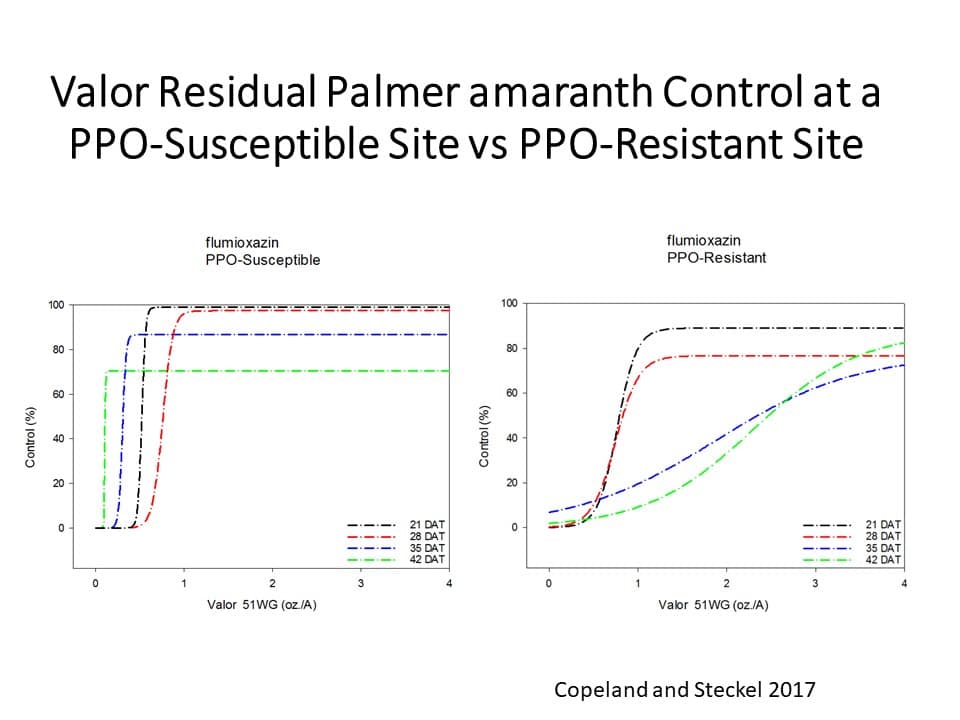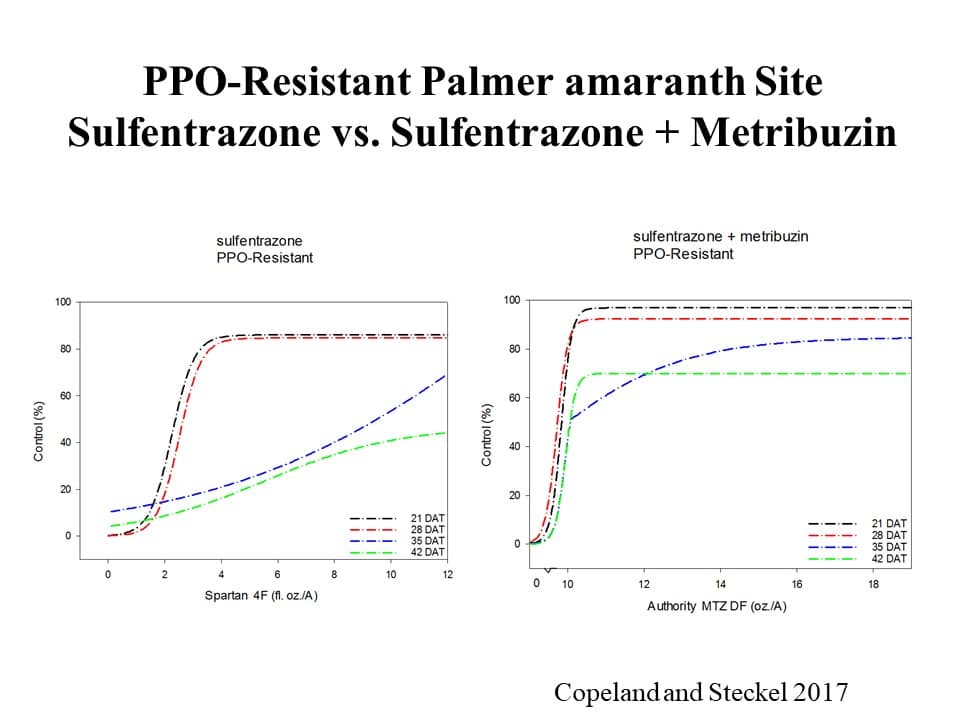Residual herbicides will play a large role in the success or failure of our weed control program in 2018. Last year a number of folks used Engenia plus Roundup followed by Engenia plus Roundup as needed in soybean. That will lead to failure if not in the short term certainly in the long term.
With respect to the traditional residual herbicides used in soybeans the playing field has changed. No longer can one rely on a PPO herbicide alone to provide consistent Palmer amaranth control. Research this past year at a known PPO-resistant Palmer amaranth site not only showed that PPO herbicides are no longer effective POST applied but lose a good bit of time for how long they provide residual control.
This research is presented below . These data clearly show that the 2 oz/A rate of Valor at a site with known PPO-resistant Palmer amaranth only provided 87% control 3 weeks out and control had slipped to less than 80% by 4 weeks. This compared to a site where the Palmer amaranth has yet to evolve PPO resistance and we get the results we have seen for the last decade. That is 100% control of Palmer amaranth for 3 to 4 weeks.
So should we use a PPO-herbicide for residual control of Palmer amaranth? As the data below shows Spartan (sulfentrazone) alone provides 80% control 28 days after application of even PPO-resistant Palmer amaranth. Therefore the PPO-herbicide still has value for Palmer amaranth.
In order to provide residual control for the 20% that get by the PPO-herbicide and provide 2 effective modes of action on the PPO-susceptible pigweed we recommend that those herbicides be applied with another herbicide mode of action that still is effective on Palmer amaranth. Herbicides like Authority MTZ (Data presented above), Fierce, Prefix, Verdict and Warrant Ultra would all be examples of this concept with a PPO-herbicide premixed with another herbicide that is effective on Palmer amaranth.



